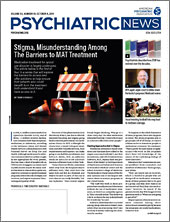The use of medical aid in dying (MAID) in Washington and Oregon has increased per 1,000 deaths since laws were passed in those states permitting the practice, according to a report in JAMA Open Network.
The majority of patients availing themselves of MAID in those states are non-Hispanic, college-educated, white individuals, and 88.5% had public or private insurance. In both states, slightly more than 72% of patients were over 65 years of age, more than 76% had cancer, and 4% received referrals for psychiatric examinations.
Those are among the findings from a study of trends in MAID (also known as medical-assisted death, physician-assisted death, and physician-assisted suicide) in the two states with the longest standing laws permitting patients with a terminal illness to receive a lethal prescription from their physician.
The increased use of MAID over time during a period when laws permitting the practice spread to other jurisdictions suggests it is becoming more acceptable, although the most recent data indicate it could be plateauing. Meanwhile, the demographics of MAID in the two states suggest that the practice has not been directed—as some have feared—at vulnerable populations based on age, race/ethnicity, educational attainment, or insurance status.
“Concerns that MAID would unintentionally target socially disadvantaged patients have not materialized,” wrote Charles D. Blanke, M.D., of the Oregon Health Science University and colleagues. Blanke is also chair of the SWOG (Southwest Oncology Group) Cancer Research Network.
The practice of physician-assisted death is among the most contentious issues in contemporary American medicine; even the term is hotly debated, with opponents of the practice tending to prefer the term “physician-assisted suicide,” while proponents insist that terminally ill patients seeking to end their lives with medical assistance should not be conflated with individuals who are suicidal when they have years of life yet to live.
Last June, the AMA House of Delegates approved a report by its Council on Ethical and Judicial Affairs stating that the AMA’s Code of Medical Ethics supports both opponents and proponents of what the council calls physician-assisted suicide (
Psychiatric News).
The Oregon Death With Dignity Act was approved by the state in 1994, permitting terminally ill adults (18 or over) who are residents of the state to voluntarily obtain a physician’s prescription for a lethal medication. In 2008, Washington state approved legislation largely modeled on the Oregon law. Today, MAID (or physician-assisted death or physician-assisted suicide) has been adopted in nine jurisdictions in the United States: California, Colorado, District of Columbia, Hawaii, Montana, New Jersey, Oregon, Vermont, and Washington.
Reasons Patients Request MAID
In the JAMA Open Network report, Blanke and colleagues sought to characterize patterns of medically assisted dying in the two states with the longest standing laws permitting the practice. They conducted a retrospective observational cohort study of Oregon and Washington patients with terminal illness who received prescriptions as part of their states’ legislation allowing MAID. They reviewed published annual reports from 1998 to 2017 in Oregon and from 2009 to 2017 in Washington.
Blanke and colleagues found that since the passage of the Oregon law, a total of 3,368 prescriptions were written in the two states, with 2,558 patients (76%) dying after they ingested the prescription. The distribution of diagnoses among patients requesting MAID is as follows: cancer (1,955, or 76.4%); neurologic illness (261, or 10.2%), lung disease (144, or 5.6%); heart disease (117, or 4.6%), or “other illnesses” (77, or 3%).
In comments to Psychiatric News, Blanke reiterated that he believes the most important finding from the comparison is the relative safety of MAID. “There is no evidence the practice is being forced on marginalized or vulnerable patients,” he said.
Patients cited the following reasons for requesting MAID: loss of autonomy (2,235, or 87.4%), decreasing ability to participate in pleasurable activities or impaired quality of life (2,203, or 86.1%), and loss of dignity (1,755, or 68.6%).
The rate of deaths by MAID per 1,000 overall deaths has risen steadily in both states (although there appears to be a drop in the last year of observation). “[W]ith the increasing age of legislation, there has been a corresponding increase in MAID use in both Oregon and Washington,” Blanke and colleagues wrote. “We can hypothesize that this is a result of similar MAID legislation in both states and supported by increased public awareness of such legislation.”
Blanke told Psychiatric News he and colleagues plan to conduct a study assessing the effect of mandatory referral for treatment of depression on patients’ decisions about following through with medical aid in dying. “I want to respect those who claim that if we treat depression in these patients, a smaller percentage will want to take their lives,” he said.
Blanke said the field of end-of-life care and especially medical aid in dying needs more interventional studies—like the one he plans to conduct on the effects of mandated treatment for depression.
“There are lots of unanswered questions,” he said. “It’s frustrating that almost all of the research in this field has been descriptive. It’s really time to do some more controlled trials, and I think we are on the cusp of doing that.”
In the JAMA Open Network article, he and colleagues concluded: “There is significant room for further integration of palliative care, social support services, and case management in end-of-life decision-making with the intent of increasing the options available to those facing a terminal disease.” ■
“Trends in Medical Aid in Dying in Washington and Oregon” is posted
here.

